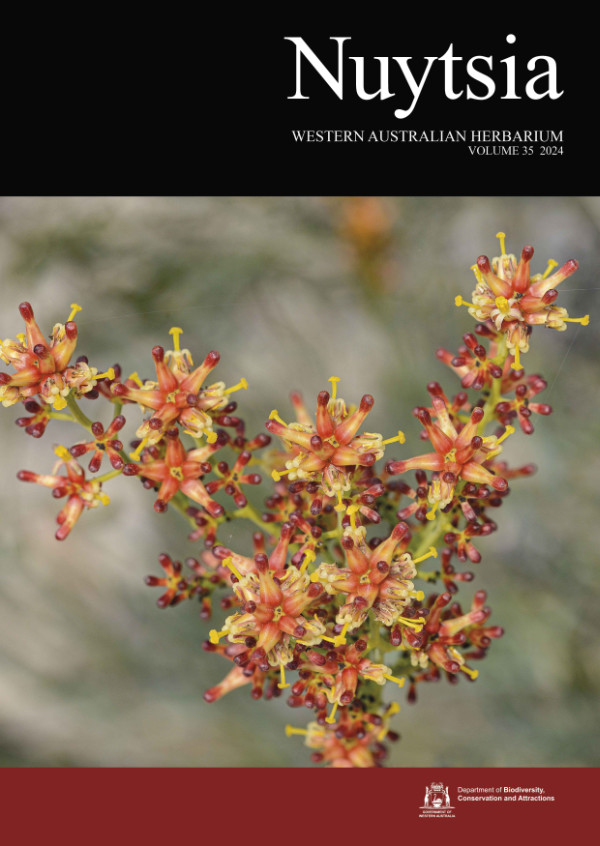Nuytsia is an open access, peer-reviewed journal that publishes original papers on the systematics, taxonomy and nomenclature of Australian (particularly Western Australian) plants, algae and fungi, especially descriptions of taxa, revisions, identification guides, nomenclatural and taxonomic issues, systematic analyses and classifications, censuses, and information on invasive species.
Nuytsia was founded in 1970 and is named after Nuytsia floribunda (Christmas Tree; Moodjar; Kaanya Tree), an arborescent root hemiparasite endemic to south-west Western Australia that is of cultural significance to Noongar Aborigines. One-fifth of all published native plant names for Western Australia have been formally established in the journal, including over one-quarter of the conservation-listed taxa in the State. Refer to the cumulative index to scientific names published in Nuytsia for details, and to the 50th anniversary edition for a synopsis of the journal’s impact.
Nuytsia papers are published electronically on Florabase by the Western Australian Herbarium and are freely available for download and distribution for bona fide scientific or educational use. The journal is also electronically available via the Biodiversity Heritage Library and DBCA library, and is also archived with the National edeposit database. Written permission to use and/or re-publish images and botanical illustrations must be obtained from the Managing Editor. A hard copy of each volume is no longer produced, and subscriptions no longer taken.
Opinions expressed by authors in articles published in Nuytsia are their own and do not necessarily represent the policies or views of the Department of Biodiversity, Conservation and Attractions.
© Copyright Department of Biodiversity, Conservation and Attractions. ISSN 0085-4417 (print: 1970–2023); ISSN 2200-2790 (online).
New to Nuytsia
Published on Thursday, 29 August 2024.
Leucopogon longipes (Ericaceae: Epacridoideae: Styphelieae), a remarkable, new, short-range endemic from the Great Southern district of Western Australia
HISLOP, M. AND BARRETT, S.R., Nuytsia 35: 83–86 (2024)
A new combination in Cynodon for Brachyachne anisocarpa (Poaceae)
MACFARLANE, T.D., Nuytsia 35: 87–89 (2024)
Goodenia austrina and G. vanleeuweniana (Goodeniaceae), two new blue-flowered species from Western Australia
SAGE, L.W. AND SHEPHERD, K.A., Nuytsia 35: 91–99 (2024)
New taxa and a key for Thryptomene (Myrtaceae: Chamelaucieae: Thryptomeninae)
RYE, B.L., Nuytsia 35: 101–135 (2024)
A new weed for Western Australia from Torndirrup National Park: Plecostachys serpyllifolia (Asteraceae)
HOPPER, STEPHEN D., Nuytsia 35: 137–140 (2024)
